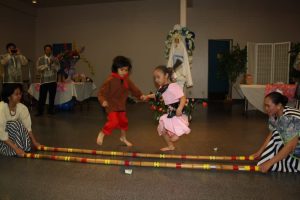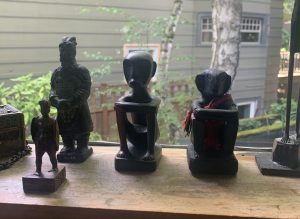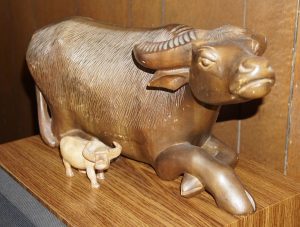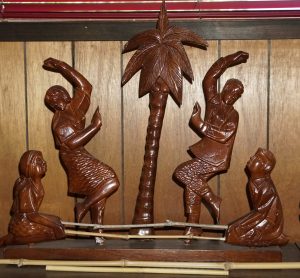Young, Dumb, and Ignorant
Delano Cordova
Filipino Culture is no stranger to me. I have always been around Filipino artifacts even as a young child; my grandfather’s office was adorned with hats that I never knew the name of, my dad had ornate wooden carabao, my mother even taught me tinikling and other folk dances.

When I was younger, I never really took the time to understand what these “Filipino trinkets” were about or what importance that they held. To me, the rice deity statues were funny toys to play with, the kubing my grandfather had was an instrument that made your mouth make cool sounds, and the ling-ling-o that my grandmother wore was a pretty necklace for a pretty lady .

I always thought that having things like this were just part of being Filipino, kind of like having a glove is part of being a baseball player. These objects hold stories and history that I had not explored, even with all of the resources I had available to me. It was like I had the book but only looked at and pictures (something that I may or may not do to this day).
These objects never struck a deeper interest with me as a young boy because they were never given importance. I never asked questions about them because the only other objects like these in my head were pieces of art or toys, two things that I never asked questions about.
I think that even though my parents and grandparents knew about these objects in depth and probably had shown them off to me about how cool they were never given distinction. They all lumped together. School didn’t help either, I would learn about medieval knights, different types of bridges, what is in owl pellets, but not about my own culture. I was fortunate to have 2 Filipino teachers in elementary school but because I was the only other Filipino in the room, they could not afford to teach me what they knew of our history and culture beyond lumpia and pancit.

Looking back, I feel that I could have been more versed in my culture and know more about my history now if I had just started to ask questions when I was younger. I often think about this now that both of my Grandfathers have passed and I no longer have access to their accumulated knowledge throughout their long lives. That is one of my biggest regrets. Alas, every journey must begin with a single step and now is a better time than ever to start.
Because of my lack of knowledge, history has become a new interest of mine, especially history that can relate to myself. I never enjoyed learning about American history such as learning about our forefathers or memorizing major legislation from the 1800’s, but I did enjoy what little learning we did about civil rights and the stories of struggle that I could relate with like the UFW Grape Workers strike. I now attend lectures and events, I read articles, and pick my grandmother’s brain about my newest and oldest historical interest, Filipino American History and Culture.


